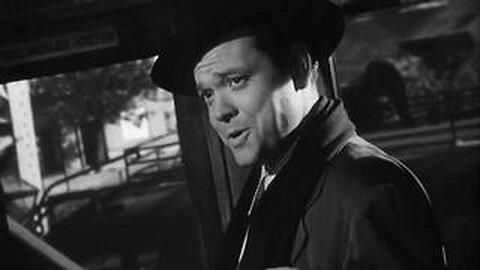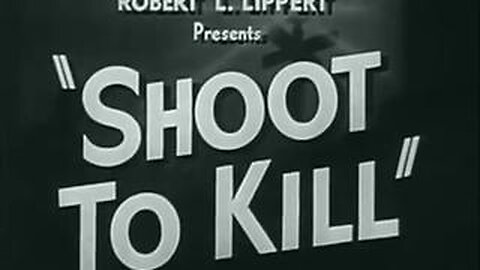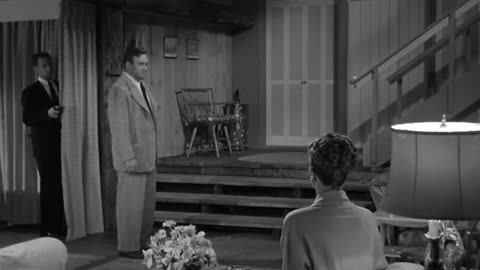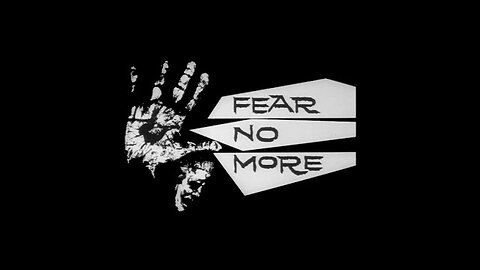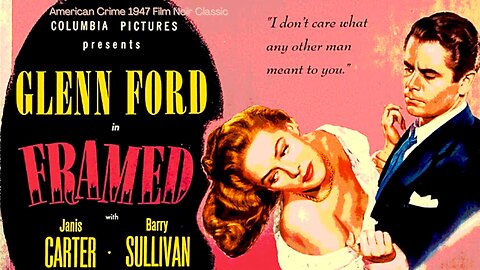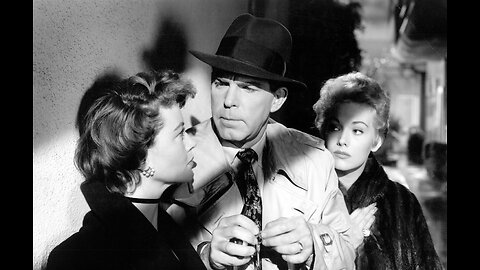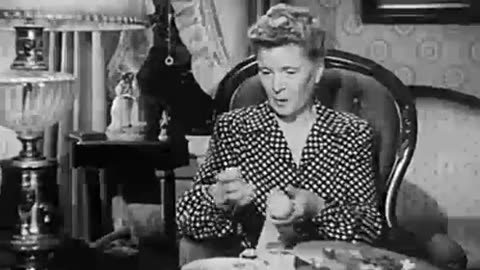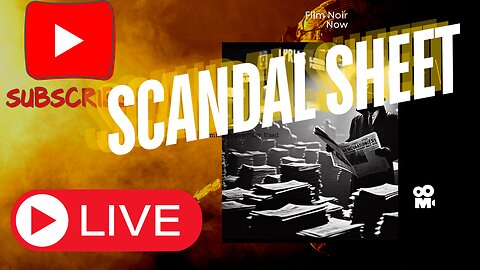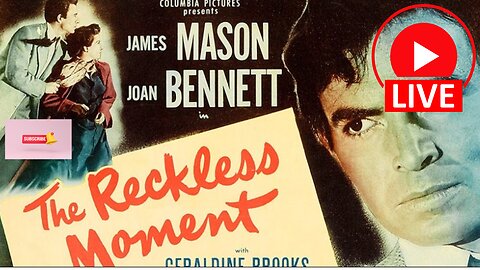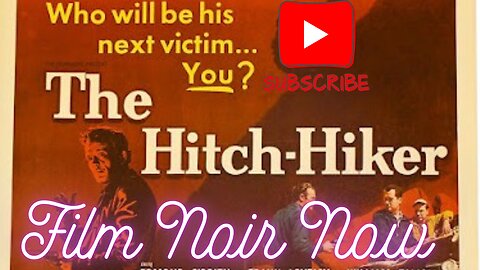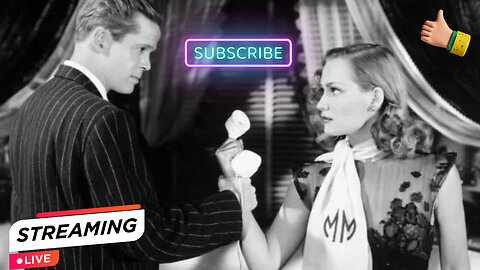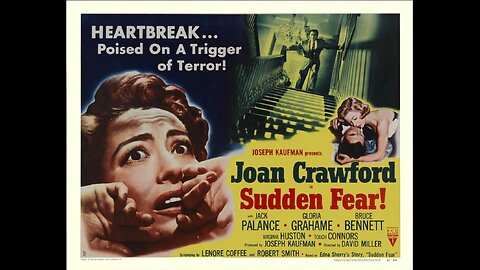Premium Only Content

The Third Man" (1949) - A Noir Masterpiece of Post-War Vienna
Shoot To Kill 1947 Film Noir
The Dark Past 1948 Film Noir
The Thirteenth Hour 1947 Film Noir, Richard Dix, Karen Morley
Fear No More 1961 crime thriller
Framed 1947 Glenn Ford, Janis Carter
Pushover 1954 Kim Novak, Fred MacMurray
Impact 1949 Film Noir
Scandal Sheet 1952
The Reckless Moment 1949 film noir
The Hitch-Hiker 1953
Black Angel 1946 Film Noir
Street Of Chance 1942 Film Noir
D.O.A. 1950
Scarlet Street 1945
The Glass Wall 1953 Film Noir
Sudden Fear 1952 Film Noir
Abandoned 1949 Film Noir
High Tide 1947 Film Noir 720P
Shoot To Kill 1947 Film Noir
Get instant answers about this film at:
https://poe.com/Film_Noir_Now
Freebies for watching: https://digitalprofits7.com/free
In this taut police procedural noir, a dedicated detective becomes entangled in a complex murder investigation that reveals the dark underbelly of urban crime, challenging his professional integrity and personal moral code.
Key Cast:
Preston Foster as Detective Steve Randall
Peggy Converse as Mary Dexter
Robert Wilcox as Jim Crane
Detailed Analysis:
"Shoot to Kill" represents a quintessential mid-1940s noir that blends hard-boiled detective work with psychological tension. The film follows Detective Steve Randall as he investigates a series of murders that point to a larger criminal conspiracy. Unlike many noirs that focus exclusively on private investigators, this film provides an insider's view of police methodology, showing the procedural aspects of crime-solving with gritty realism.
Cinematography and Visual Style:
The film employs classic noir visual techniques - stark lighting with pronounced shadows, low-angle shots that create psychological tension, and urban environments that feel claustrophobic and morally ambiguous. The black-and-white cinematography emphasizes moral gray areas, a hallmark of the noir genre.
Thematic Exploration:
Central themes include institutional corruption, the thin line between law enforcement and criminality, and the psychological toll of relentless detective work. The protagonist's journey reveals how seemingly straightforward investigations can unravel complex webs of deceit.
Critical Reception:
While not as renowned as some contemporary noir classics, "Shoot to Kill" was praised for its tight narrative and authentic portrayal of police work. It represents a period when Hollywood was exploring more nuanced representations of law enforcement beyond simplistic good-versus-evil narratives.
Why It's Worth Watching:
For noir enthusiasts, the film offers a compelling look at the genre's evolution, showcasing how police procedurals integrated noir sensibilities. It's a must-see for those interested in understanding the broader noir landscape beyond private detective stories.
Interesting Note:
The film exemplifies the post-World War II noir trend of bringing more institutional perspectives into crime narratives, reflecting societal changes and growing complexity in understanding criminal behavior.
-
 2:39:37
2:39:37
TimcastIRL
6 hours agoDemocrat LAUNCHES IMPEACHMENT Against Trump Citing Deportation, Abrego Garcia Case | Timcast IRL
142K131 -
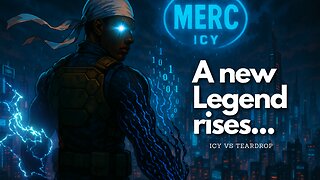 2:17:27
2:17:27
IcyFPS
5 hours agoA new legend rises.. Icy vs Teardrop | @playoffthegrid | Team MERC Grind |
17.3K2 -
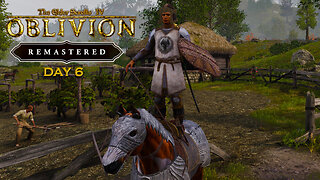 LIVE
LIVE
TwinGatz
6 hours ago🔴LIVE - Endless Jank | Oblivion Remastered
174 watching -
 1:33:55
1:33:55
Glenn Greenwald
12 hours agoGaza Starves, Pro-Israel Propagandists Escalate Extremist Rhetoric and Actions | System Update #444
144K297 -
 LIVE
LIVE
EnDuEnDo
6 hours ago🚨Variety Stream 🎮 Push to 500 Followers 🚀 Chill Vibes 😎
233 watching -
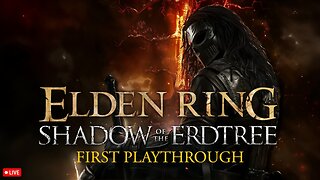 11:04:48
11:04:48
GrimmHollywood
14 hours ago🔴LIVE • GRIMM HOLLYWOOD • SHADOW OF THE ERDTREE FIRST PLAYTHROUGH • PART 1
67.4K3 -
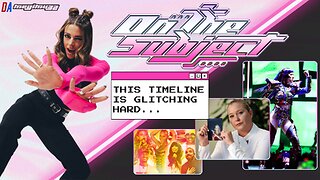 1:40:13
1:40:13
megimu32
8 hours agoON THE SUBJECT: This Timeline is Broken: Epstein, Aliens & Summer Anthems
55.5K19 -
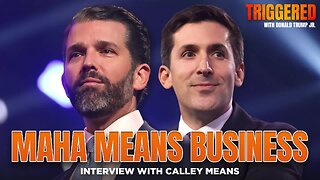 1:02:42
1:02:42
Donald Trump Jr.
13 hours agoMAHA Means Business, Interview with Calley Means | TRIGGERED Ep.237
157K63 -
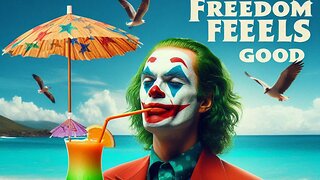 1:53:52
1:53:52
Joker Effect
5 hours agoWhy aren't you trying to enjoy yourself? Live a little! https://go.mother.land/joker
42.1K4 -
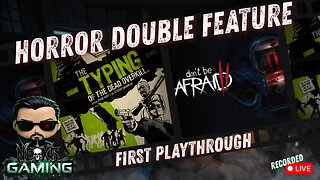 LIVE
LIVE
NeoX5
7 hours agoTyping of the Dead | Don't Be Afraid 2 | Rumble Gaming
181 watching
